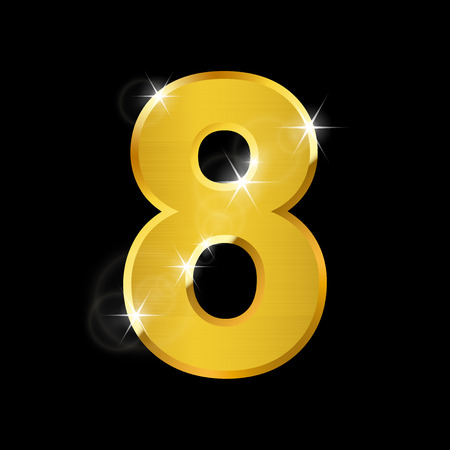1. Introduction: The Fascination with Signs from the Wild
Across the rolling hills and misty woodlands of ancient Britain, a deep-rooted fascination with nature’s hidden messages shaped the spiritual life of its people. This curiosity was not merely an idle pastime but a vital part of Druidic culture—a sophisticated society that revered the land and its creatures as living sources of wisdom. For the ancient Britons, every rustling leaf or sudden flight of birds offered clues to the mysteries of fate, forging a unique bond between human communities and the wild world that surrounded them. This article explores how animal omens and augury were woven into the fabric of Druidic belief, setting the stage for a distinctively British approach to interpreting signs from nature. In doing so, it unravels the ways in which these practices reflected both a spiritual quest for meaning and a pragmatic response to the unpredictabilities of daily life in pre-Roman Britain.
2. Druidic Cosmology and the Cultural Place of Augury
In ancient Britain, the Druids cultivated a worldview deeply rooted in the interconnectedness of all living things, an outlook that profoundly shaped their interpretation of animal omens and augury. Far from mere superstition, Druidic cosmology positioned animals as vital messengers bridging the material and spiritual realms, acting as intermediaries between humankind and the unseen forces that governed nature. This perspective was not isolated but woven into the fabric of British myth, folklore, and daily life.
The Philosophical Underpinnings of Druidic Belief
Druids saw the natural world as animated by an intricate web of spirits and energies, with each creature embodying certain virtues, lessons, or warnings. The presence or behaviour of specific animals—whether a raven’s caw at dawn or a deer crossing ones path—was interpreted as a sign carrying guidance or forewarning from the Otherworld. This approach reflected a fundamentally animistic philosophy: every element in nature had meaning, purpose, and agency.
Animals as Messengers in British Folklore
British mythology is replete with examples where animals serve as omens or harbingers. For instance, the appearance of a white stag often signalled a forthcoming journey or transformation, while corvids like ravens and crows were linked to prophecy and ancestral wisdom. The following table illustrates some common animal omens found in ancient British traditions:
| Animal | Associated Meaning | Cultural Context |
|---|---|---|
| Raven | Prophecy, transition, messages from ancestors | Linked to war deities; seen at battlefields as guides for souls |
| Stag (White) | Transformation, pursuit of knowledge or destiny | Appears in Arthurian legends; signals quests or spiritual awakening |
| Owl | Wisdom, death, revelation of secrets | Regarded as a guardian between worlds; omen of change or endings |
| Wolf | Loyalty, guardianship, instinctual warning | Symbolises boundaries; sometimes an omen of conflict or protection |
| Swan | Purity, transition between life stages | Associated with love stories and journeys to the Otherworld |
Druidic Practices: Reading the Signs
The practice of augury among Druids went beyond passive observation. It was systematic and imbued with ritual significance. Augurs would consider not only which animal appeared but also its behaviour, timing, direction of movement, and even accompanying sounds. This interpretative process was informed by centuries-old oral traditions and local lore, blending empirical observation with mythopoetic understanding. In this way, augury became both a spiritual art and a cultural institution—an essential means for communities to navigate uncertainty and align themselves with what they believed to be the will of the natural world.

3. Animal Omens: Birds, Beasts, and Symbolism in the British Isles
In ancient British Druidism, the natural world was not merely a backdrop for spiritual practice—it was an active participant, filled with subtle messages and warnings. Among the most potent of these were animal omens, particularly those involving birds and beasts native to the British Isles. Druids were keen observers of wildlife, believing that the presence or behaviour of certain animals could reveal the will of the gods or foretell significant events.
Crows and Ravens: Messengers of Fate
Few animals captured Druidic imagination quite like crows and ravens. These dark-plumed birds, often associated with battlefields and ancient yew trees, were seen as mediators between worlds. The sudden appearance of a crow at a crossroads or during an important gathering might be interpreted as a warning or an omen of transformation. Their intelligence and mysterious calls made them natural symbols of prophecy and change—echoing through Celtic myths such as that of the goddess Morrigan, who often took raven form to deliver cryptic messages.
Stags: Emblems of Sovereignty and Spiritual Quest
The stag, with its regal antlers and elusive grace, carried a different sort of significance. For the Druids, encountering a white stag in particular was laden with meaning—a call to spiritual adventure or a sign that one was entering sacred ground. Stags represented purity, otherworldliness, and the liminal space between this world and the next. They also embodied sovereignty; their presence in royal hunts or ritual contexts underscored connections between kingship, nature, and divine favour.
Other Notable Omens: Owls, Boars, and Serpents
Beyond crows and stags, Druids also paid heed to other creatures. Owls were harbingers of wisdom but could also portend death due to their nocturnal habits. Wild boars symbolised courage and ferocity—qualities admired in warriors—and their sudden appearance could be seen as a challenge or blessing. Even serpents had their place in Druidic symbolism: as creatures that shed their skins, they embodied cycles of renewal and hidden knowledge beneath the earth.
Cultural Resonance Across Time
The symbolic language of animal omens embedded itself deeply into British folklore, surviving long after the decline of formal Druidic practice. Today, echoes remain in superstitions about magpies or tales of spectral hounds on misty moors—a testament to how profoundly our ancestors saw themselves as woven into nature’s grand tapestry. By interpreting these animal signs, Druids not only sought guidance but reaffirmed their connection to the land—a relationship still worth pondering in our increasingly urban lives.
4. Practices of Augury: Methods and Ritual Contexts
In ancient British Druidism, augury—the art of divining the future through natural signs—played a pivotal role in both daily life and momentous decision-making. The Druids, recognised as the spiritual elite of pre-Roman Britain, adopted a range of ritualistic methods to interpret animal omens. These practices were not merely superstitious acts but structured procedures steeped in tradition and local context. Many of these rituals unfolded at sacred sites such as Stonehenge, Avebury, or within oak groves that were considered liminal spaces connecting this world to the Otherworld.
Observing Flight Patterns and Animal Behaviour
Druids paid meticulous attention to the flight patterns of birds—a practice possibly influenced by continental Celtic traditions but distinctively adapted to the British landscape. For example, ravens, crows, and starlings were especially significant due to their prevalence and their association with both life and death. Observers would note the direction, formation, and calls of these birds, interpreting each nuance as a message from the divine or ancestral spirits. Alongside avian augury, terrestrial animals such as deer, foxes, and hares were closely watched for unusual behaviour or unexpected appearances during rituals.
Ritual Contexts: Sacred Sites and Ceremonial Frameworks
Augury was rarely a private affair; it often occurred within communal ceremonies led by senior Druids. Locations were chosen for their inherent spiritual resonance—hilltops offering panoramic views for bird-watching or riverbanks where otters might appear as omens of change. Seasonal festivals like Beltane or Samhain provided further context, enhancing the perceived potency of omens encountered during these liminal times.
Summary Table: Key Methods of Druidic Augury
| Method | Description | Typical Sites |
|---|---|---|
| Bird Flight Observation | Interpreting flight paths, calls, and behaviours for guidance on warfare or alliances | Hilltops (e.g., Glastonbury Tor), stone circles |
| Mammal Behaviour Tracking | Monitoring presence and actions of deer, foxes, hares as indicators of fortune or warning | Sacred groves, woodland clearings |
| Unusual Animal Encounters | Treating rare sightings (e.g., albino animals) as direct messages from the Otherworld | Riverbanks (e.g., Thames), meadows near ritual sites |
Cultural Resonance in Contemporary Britain
The echoes of these ritualistic methods remain alive in British folklore today—blackbirds as harbingers of rain, or the sudden appearance of a fox as an omen of impending change. Understanding these ancient practices not only illuminates Druidic wisdom but also enriches our appreciation for how British landscapes have shaped—and been shaped by—the search for meaning in nature’s subtle cues.
5. Echoes in the Modern British Imagination
The ancient art of Druidic augury and the reading of animal omens may seem, at first glance, a relic lost to the mists of time. Yet, scratch beneath the surface of contemporary British culture, and their echoes are unmistakably present. Whether woven through local folklore, spiritual practices, or the very language we use day-to-day, these traditions continue to shape the collective imagination.
Folklore: The Persistent Shadow of Omens
Across Britain, tales abound of birds foretelling events—magpies predicting luck or sorrow, owls signalling impending death, black cats crossing one’s path as harbingers of fortune or misfortune. These beliefs are not mere superstitions but living vestiges of Druidic thought, reimagined through centuries yet retaining their animistic roots. Village fairs, seasonal festivals like Samhain and Beltane, and even urban legends often reference animal signs as portents—an unbroken thread linking modern Britons with their ancient past.
Modern Spiritual Movements: Reclaiming Ancestral Wisdom
Contemporary Druidry and neo-pagan groups across the UK actively reclaim and reinterpret augury as a form of spiritual insight. Animal encounters—whether a fox glimpsed at dawn or a raven circling overhead—are frequently treated as meaningful messages from nature or the Otherworld. Workshops on “animal medicine” and shamanic journeying regularly draw on Celtic symbolism, demonstrating how Druidic perspectives have been revived and adapted for seekers looking to reconnect with Britain’s mythic landscape.
Everyday Language: Augury in Our Speech
Druidic augury also lingers in British English itself. Phrases such as “a bad omen,” “reading the signs,” or describing someone as “as wise as an owl” all subtly point back to ancestral practices of interpreting animal behaviour as symbolic guidance. Even common superstitions—avoiding walking under ladders or throwing salt over one’s shoulder—echo a worldview where everyday occurrences are charged with deeper meaning.
In essence, while Druids themselves may no longer walk Britain’s sacred groves in their ancient form, the spirit of animal augury endures. It quietly shapes how Britons interpret coincidence, relate to wildlife, and search for meaning amid uncertainty—a testament to the enduring power of myth and imagination in shaping cultural identity.
6. Conclusion: Reverberations of Ancient Wisdom
The enduring legacy of animal omens and augury within ancient British Druidism resonates well beyond the mists of antiquity, offering more than mere historical intrigue. These practices were not just esoteric rituals; they acted as vital cultural compasses, guiding decisions, shaping societal values, and deepening connections with the natural world. Even today, their echoes can be traced in the British psyche—manifested in everything from countryside folklore to a collective reverence for wildlife and seasonal rhythms. Rather than fading into obscurity, the Druidic approach to reading signs in nature invites modern Britons to reconsider their relationship with fate, intuition, and the environment.
Nature as Oracle: A Timeless Perspective
In an era where science often dominates discourse, the idea that animals can be messengers or portents might seem quaint. Yet, the British appreciation for animal symbolism persists—from the fox’s cunning in urban tales to magpies’ cryptic presence in nursery rhymes and proverbs. This cultural undercurrent speaks to a lingering belief that nature communicates with us, if only we are attentive enough to notice.
Fate, Intuition, and Everyday Augury
What began as structured Druidic augury now subtly permeates daily life. Whether it’s reading weather patterns before a countryside ramble or interpreting a sudden encounter with a deer on a misty morning, these moments echo ancient wisdom. They remind us to trust our instincts and perceive meaning beyond the surface—a distinctly British blend of pragmatism and poetic imagination.
Cultural Continuity and Modern Reflection
Ultimately, animal omens and augury serve as both heritage and mirror. They reflect how ancient Druids sought harmony with their surroundings while offering modern society a lens through which to reengage with nature’s mysteries. By honouring this tradition, contemporary British culture maintains a thread of continuity—one that encourages curiosity, respect for the wild, and an openness to the subtle interplay between destiny and personal insight.


